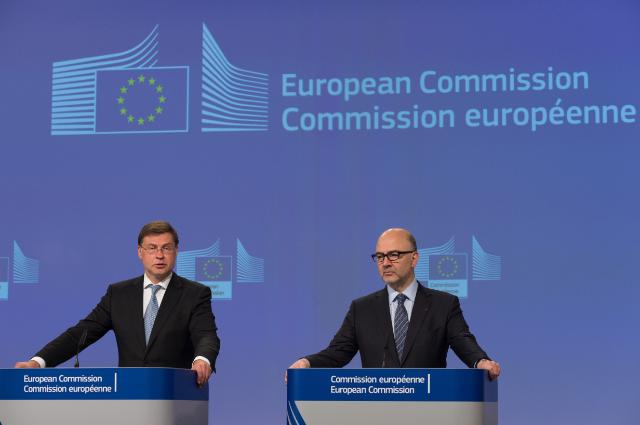Italy appears to be in the midst of another major financial crisis as Moody’s cut its credit ratings from “Baa2” to “Baa3”, one level just above the junk territory.
The expected move is the result of a review initiated on the 25 May after the newly elected government signalled an increase of spending in its draft budget, and thus making Italy vulnerable to future domestic or externally sourced shocks.
The agency had publicly indicated that it was reviewing the policies enacted by Italy Ministry of Economy and Finance before making any decisions.
Moody’s update notes that the key drivers for the downgrade were the significant risk of a material weakening Italy’s fiscal strength and the potential risk that structural reform effort stalls.
Ratings are expressed with letters A, B, C which represent the quality of the credit risk obligations.
Italy’s Baa3 long-term issuer rating denotes a premium grade with some speculative elements and moderate credit risk. In the short-term market, this means that the country’s ability to repay its short term obligations is deemed acceptable.
Ratings agencies measure the credit worthiness of governments and companies to determine whether they can pay back their debts on time. These ratings provide insights to investors on how risky their investments are.
Talking to CNBC’s Squawk Box Europe last week, Colin Ellis, managing director for credit strategy at Moody’s said: “Our ratings are not about whether the policies are right or wrong. Our ratings are merely rank orderings of credit risk, they are an assessment of ‘will you get your money back in full and on time’,”
On the other hand, Moody’s Investors Service updated the credit outlook from ‘negative’ to ‘stable’ citing that Italy still exhibited important credit strengths that balance the weakening fiscal prospects.
A populist budget
Since the credit crunch of 2008, many European countries including Italy have struggled to resurrect their financial position. Discontented from the economic crisis and corruption, Italians were lured to populist parties such as ‘Lega Nord’ and ‘Five Star Movement (M5S)’ at the March 2018 general election, resulting in a hung parliament.
After several months of negotiations, both parties formed a coalition for a new government headed by Matteo Salvini and Luigi Di Maio, the leaders of Lega Nord and M5S respectively. They promised voters to boost the struggling economy by increasing welfare spending, cutting taxes and cancelling unpopular pension reforms, and thus expanding its budget deficit.
The plans worried investors around the world and triggered a sell-off of Italian bonds, besides facing growing pressures from the European Union Commission. Under EU rules, member states are not supposed to run annual deficits greater than 3% of their total economic output.
Deputy Prime Minister Matteo Salvini stated that the government have no intention of backtracking on budget plans or existing commitments. Salvini also suggested that underhand activity was afoot, accusing powerful financial institutions of effectively ganging up on Italy, with the intention of purchasing Italian companies at knockdown prices.
As the situation continues to develop, the Italian Council of Ministers continues to work on its 2019 budget. The draft publication was submitted to the European Commission on 15 October.
In a letter published on its website, the Commission’s Vice President Valdis Dombrovskis said that Italy’s Draft Budgetary Plan (DBP) for 2019 was clearly breaking EU rules.

Italy worries investors
Following Moody’s update, S&P Global is expected to announce their rating decisions before the end of October.
In what has already been a choppy time for European markets, investors are very much on edge at present. This will be one of the first tests of the new government viability and coherence.
Many market observers believe that the new policies are unwise. There is concern that the extra spending included in the budget will result in public debt becoming unsustainable. This would then raise the prospect of a public debt crisis in the foreseeable future, with markets already hugely sensitive to the consequences of such situations.
However, Moody’s also indicated in a preliminary statement on the issue that the Italian credit line can be considered particularly safe, and that a downgrading of its rating is by no means inevitable. This can be considered somewhat encouraging, at a time which is undoubtedly one of uncertainty for Italians.
UBS Wealth Management and Allianz Global Investors have both taken up significant positions in Italian bonds, believing that the country low probability to default within the next two years, presents a great buying opportunity for investors.
However, other major institutions are less than convinced. The International Monetary Fund (IMF) is dubious about the Italian mooted plans and sceptical in regards to the notion of increased borrowings, particularly at a time when Italy is already significantly indebted.
The IMF warned the Italian administration to follow European Union rules closely, or face risking a major rebellion from investors.
Moody’s downgrade to Baa3 rating takes Italy to just one notch above junk status. This certainly represents a tricky conundrum for the government, at a time when it feels that the economy requires a major boost of investments.






